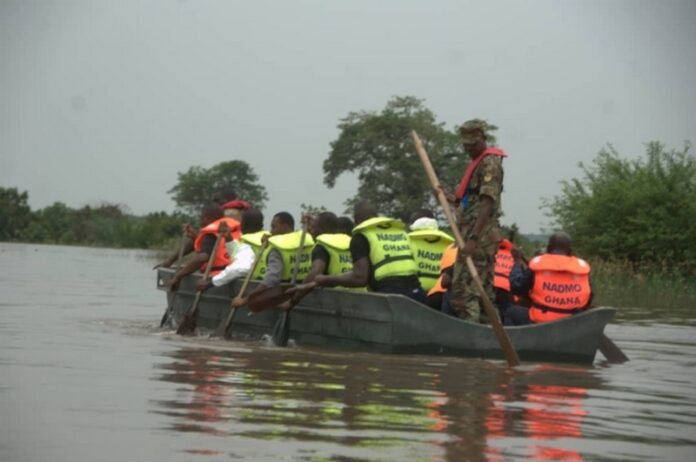As Ghana braces for another rainy season, the National Disaster Management Organisation (NADMO) is shifting gears from its usual relief-centered approach to proactive disaster preparedness, sending a clear message: “prevention pays.”
Flooding remains one of the country’s most persistent threats, especially in vulnerable urban zones. Municipalities such as Kwabre East and Asokore Mampong have been flagged as high-risk areas due to repeated disaster incidents. In 2024 alone, Kwabre East recorded at least 17 disaster cases linked to flooding, fire, and poor drainage.
“We had a number of children who were displaced and some buildings that collapsed,” said Abdul Latif Chambas, a NADMO official at Kwabre East.
Determined to change the narrative, NADMO is prioritizing strategic community empowerment this season over post-disaster relief.
“I think it is important we do a simulation exercise. Because without a simulation exercise, it’s going to be very difficult to identify the gaps in the system,” emphasized Charlotte Norman, Director for Climate Change Adaptation and Disaster Risk Reduction at NADMO.
Charlotte noted that proactive preparedness could significantly reduce both casualties and destruction when floods occur. NADMO’s strategy includes simulation exercises and intensive training for health workers, emergency responders, security agencies, assembly members, meteorological officers, and community leaders. The aim is to clearly define the roles and responsibilities of each stakeholder, ensuring swift and coordinated action when disaster strikes.
“These simulations help everyone from health officers to assembly members understand what to do during a flood,” she said. “We’re spelling out everyone’s responsibilities.”
The drills are facilitated by experts from the West African Science Service Centre on Climate Change and Adapted Land Use (WASCAL), helping agencies build a unified response system.
“The training must extend to the district level and link up with the national standard operation protocols,” said Dr. Selack Seyni, a facilitator from WASCAL. “This is the only way we can reduce casualties, damages, and losses that may be around disasters.”
At the local level, officials are using lessons from past disasters to reshape their approach.
“We don’t want to wait for disaster to strike and then give out relief items,” Abdul Latif stressed. “Prevention is better. That’s why we’re acting now.”
Tackling The Root Causes Of Urban Flooding
Flooding in Ghanaian cities stems from a combination of natural and human factors. While heavy rainfall plays a major role, the situation is worsened by human practices such as poor waste disposal, construction on waterways, weak enforcement of planning regulations, and unchecked urban development.
The growing impact of climate change has added another layer of concern, with unpredictable weather patterns triggering heavier downpours and more frequent floods.
Participants in NADMO’s preparedness programs say the training has increased their confidence in handling flood-related emergencies.
“This is the first time I’ve had such an engagement with NADMO, sitting at one table to decide how to handle emergencies and disasters within the municipality,” said Abena Serwah, a social welfare department worker. “I found it insightful. Now I know how to help if something happens.”
Another participant, Elsi Kusi Appiah, shared similar sentiments: “It has been an eye-opener. Now I know all the flood-prone areas.”
NADMO says the urgency to act has never been more pressing. The organization is reaffirming its commitment to saving lives and reducing the scale of destruction caused by floods — not only this year but for the long term.
For NADMO, preparedness is not just a strategy — it’s a life-saving necessity. And one message resounds from the ground up: prevention truly does pay.
ALSO READ:

